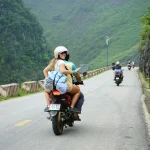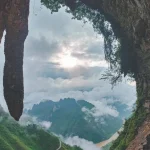If you have the opportunity to come to Ha Giang, there is a place that you absolutely cannot miss when visiting this place. That is the Lung Cu flagpole, a sacred place of the people of Northeast Vietnam. At the same time, this is also a symbol of an important border milestone of Vietnam. So today, let’s find out with Karst Plateau what is attractive about the Lung Cu flagpole!
1. Introduction to Lung Cu flagpole
1.1 Where is Lung Cu flagpole?

Lung Cu flagpole stands proudly in the middle of vast mountains and forests
Lung Cu is a highland commune located on the top of Dong Van, the northernmost region of Vietnam. This place is 24km from the center of Dong Van Town and is famous for its impressive natural landscape and cultural diversity of highland ethnic groups.
Located in the middle of the border with China on three sides and adjacent to Ma Le commune on the south side. Lung Cu is home to many ethnic minorities such as H’mong, Lo Lo, Tay, and Pu Peo, creating a rich and multi-dimensional cultural picture. With the blend of wild nature and cultural diversity, Lung Cu is becoming an attractive destination for lovers of exploring and experiencing the cultural identity of the Vietnamese nation.
Lung Cu flagpole is a famous tourist destination in Ha Giang. This place is located in Lung Cu commune, Dong Van district, Ha Giang province. Lung Cu flagpole is a great work, it is located about 2km from the northernmost point of the Fatherland and is a long-standing historical relic of the Vietnamese nation.
Lung Cu flagpole is located on the top of Lung Cu with an altitude of about 1,470 m, this is the highest point of the northernmost point of Vietnam. It is located about 500km from the center of Hanoi and from Ha Giang to Lung Cu nearly 200km of mountain roads.
1.2 History of Lung Cu flagpole in Ha Giang
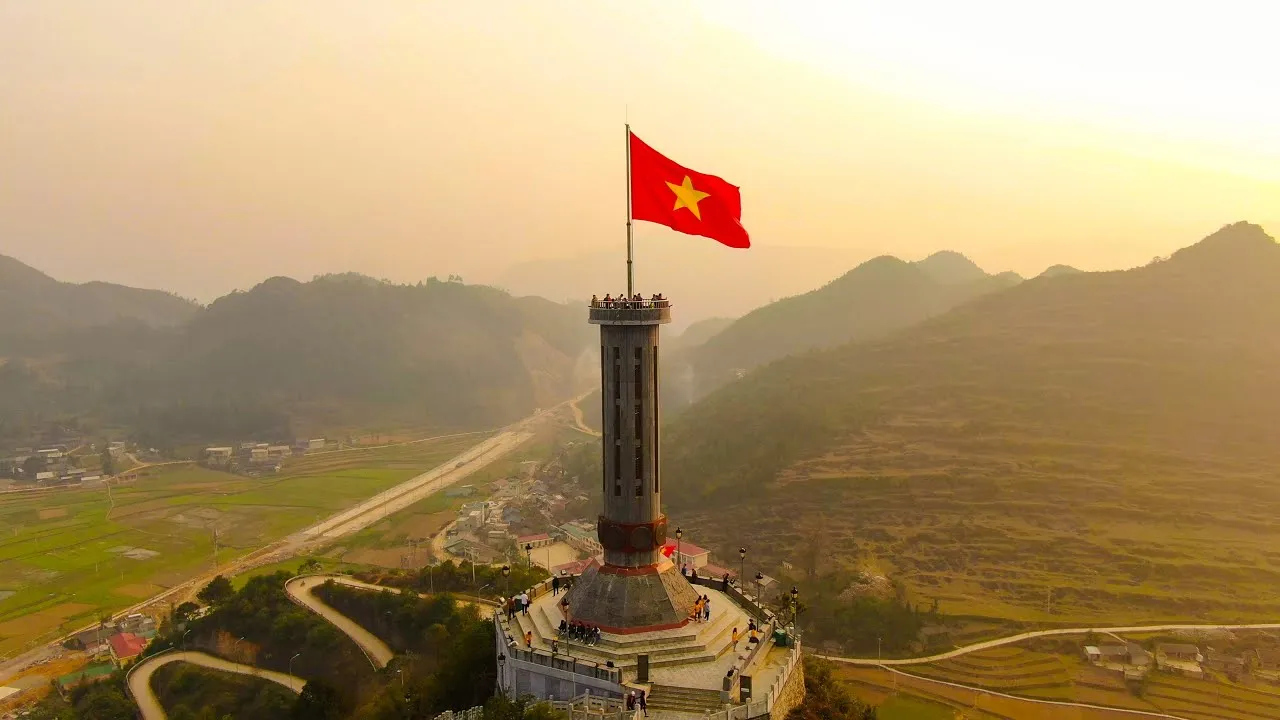
Lung Cu on a sunny sunset afternoon
The flagpole at Lung Cu is a sacred symbol marking the solid sovereignty of Vietnam over many generations.
According to history, when Ly Thuong Kiet calmed the border area in Lung Cu, he planted a flag on the top of Dragon Mountain to affirm the country’s sovereignty. The flagpole at that time was only made from Sa Moc wood, until 1887 it was rebuilt. After that, the flagpole continued to be restored and rebuilt in 1992, 2000, and 2002.
By 2002, the flagpole had a height of about 20m, the foot and pedestal were built in the shape of a hexagon, decorated with 6 reliefs with Dong Son bronze drum motifs. At the top of the column is where the national flag of Vietnam is placed. The national flag has a length of 9m and a width of 6m attached to the handle of the flag with a height of 9m. The total area of the flag is 54 square meters, symbolizing the 54 ethnic groups of Vietnam.
2. What is the most beautiful season to travel to the Lung Cu flagpole?
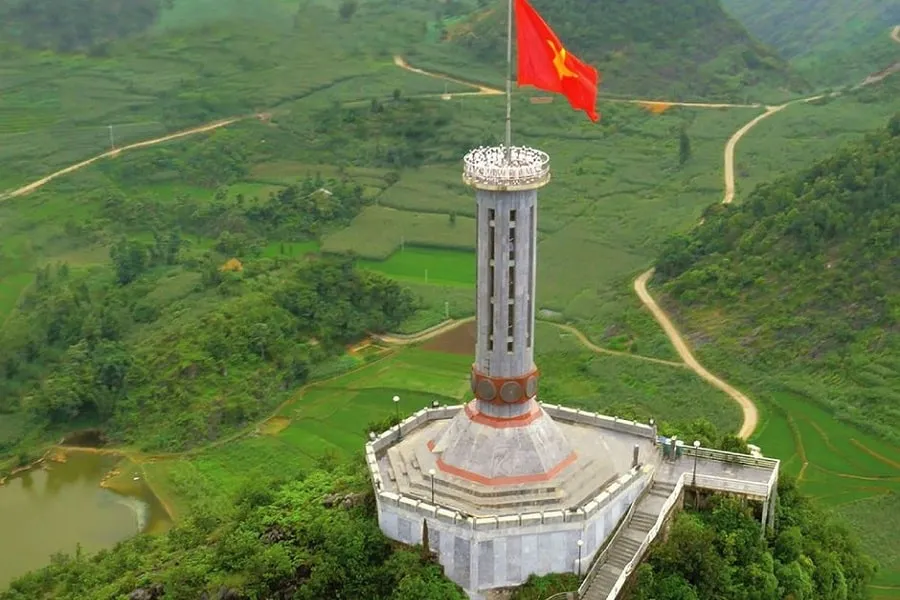
From January to March, admire plum and peach blossoms in full bloom
To get to the Lung Cu flagpole, you also need to arrange a trip to Ha Giang, and you need to have a specific schedule. If you want to travel to Ha Giang and see the beautiful scenery of this place, some of the most appropriate times that you should consider are:
From January to March: Around this time, plum blossoms, peach blossoms, and yellow mustard flowers will bloom, you will admire what the nickname “blooming rocks” is like. Coming here at this time, you will be able to visit and enjoy the beautiful scenery of flowers blooming.
You can also come in May of the pouring water season. Or from June to August is also the summer period with dry weather, easy to move, and more convenient to visit the Lung Cu flagpole.
October to December is the time when buckwheat flowers bloom on the Dong Van Rock Plateau. You will see the best scenery at this time.
3. Instructions for moving up the Lung Cu flagpole
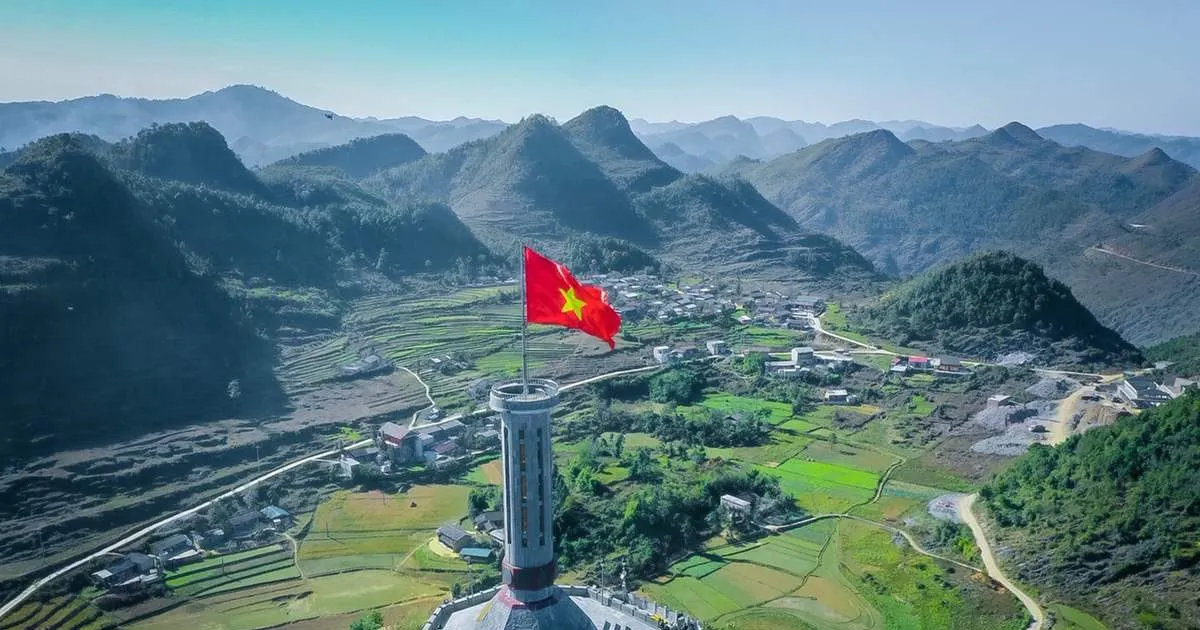
From Ha Giang City, you can rent a motorbike or car to get to Lung Cu
Lung Cu is a mountainous district 500km from Hanoi, and 200km from Ha Giang city center. According to the travel experience of Karst Plateau, in order to move quickly and ensure health, tourists should take a passenger car from Hanoi to Ha Giang city. Then rent a motorbike or car to go to Lung Cu. You can refer to the following travel routes: Ha Giang City – National Highway 4C – Quan Ba – Dong Van – Sa Phin – Lung Cu.
4. What is special about the Lung Cu flagpole?
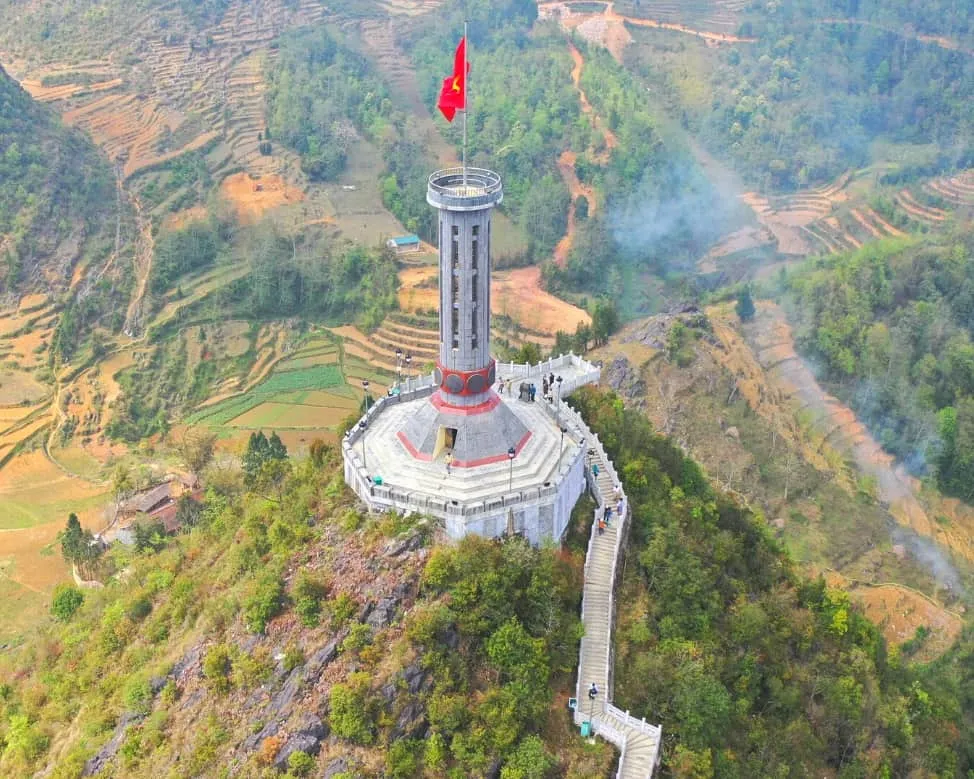
Lung Cu flagpole is located on the top of Dragon Mountain, the path from the foot of the mountain to the flagpole has a total of 839 steps
The road to the Lung Cu flagpole has a total of 839 steps divided into 3 different stages. The special thing is that between the stages there is also a waiting house so you can stop to rest and enjoy the scenery. Looking high, the Lung Cu flagpole stands tall on the top of a high mountain, and the golden star flag flutters in the wind. Moreover, on the way to conquer the stone steps, you can also see with your own eyes the wonders of nature created on the Dong Van rock plateau.
The higher you go, the more fanciful and beautiful the scenery of Ha Giang. You will experience what it feels like to stand on the highest point of the North Pole, touching the sacred flag yourself after crossing the 140-step spiral staircase with a narrow passage and just enough light. Especially according to the experience of exploring Ha Giang of Karst Plateau, you should visit here from September to December to have the opportunity to see the terraced fields with the bright yellow of ripe rice or the pastel pink of the buckwheat fields.
Tickets to Visit Lung Cu Flagpole
Tram tickets:
- Adults: 15,000 VND/ticket
- Children under 5 years old: Free
Parking fee: 10,000 VND/trip
Sightseeing tickets:
- Adults: 25,000 VND/ticket
- Children under 1.3m: Free
5. Tourist attractions in Lung Cu, Ha Giang
5.1 Check-in at Lung Cu Flagpole – the northernmost point of Ha Giang
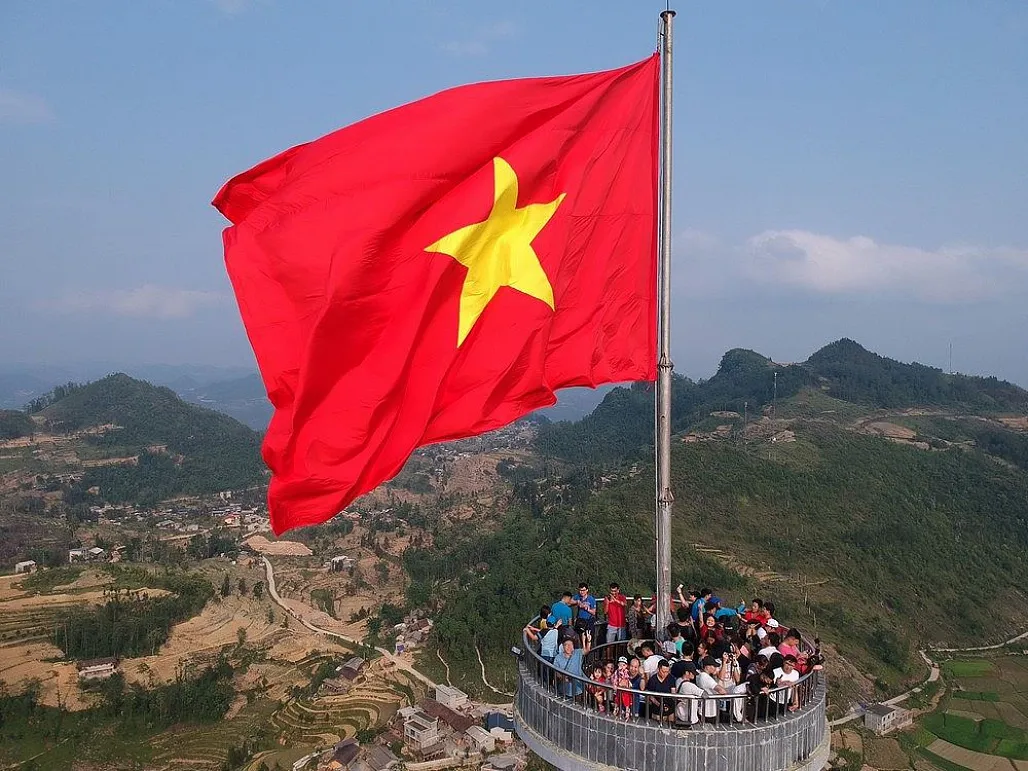
It would be a shame to go to Lung Cu flagpole and not take a photo
After going through the journey of conquering 839 steps. You will reach the Lung Cu flagpole, the northernmost peak in Vietnam. Check-in here not only records a destination but also a mark in the journey to reach the symbol of Vietnam’s solid sovereignty.
From the top of Dragon Mountain, you can also admire the landscape of the four surrounding surfaces, from terraced fields to villages and hamlets. In addition, when standing from the top of the mountain and looking down, you will see 2 clear blue ponds below, this is called the Dragon’s Eye Pond. The water in the four-season lake is clear and never runs out. Therefore, the water source is used for the daily life of the people of Lo Lo and Mong villages.
5.2 Visit Lung Cu Pass
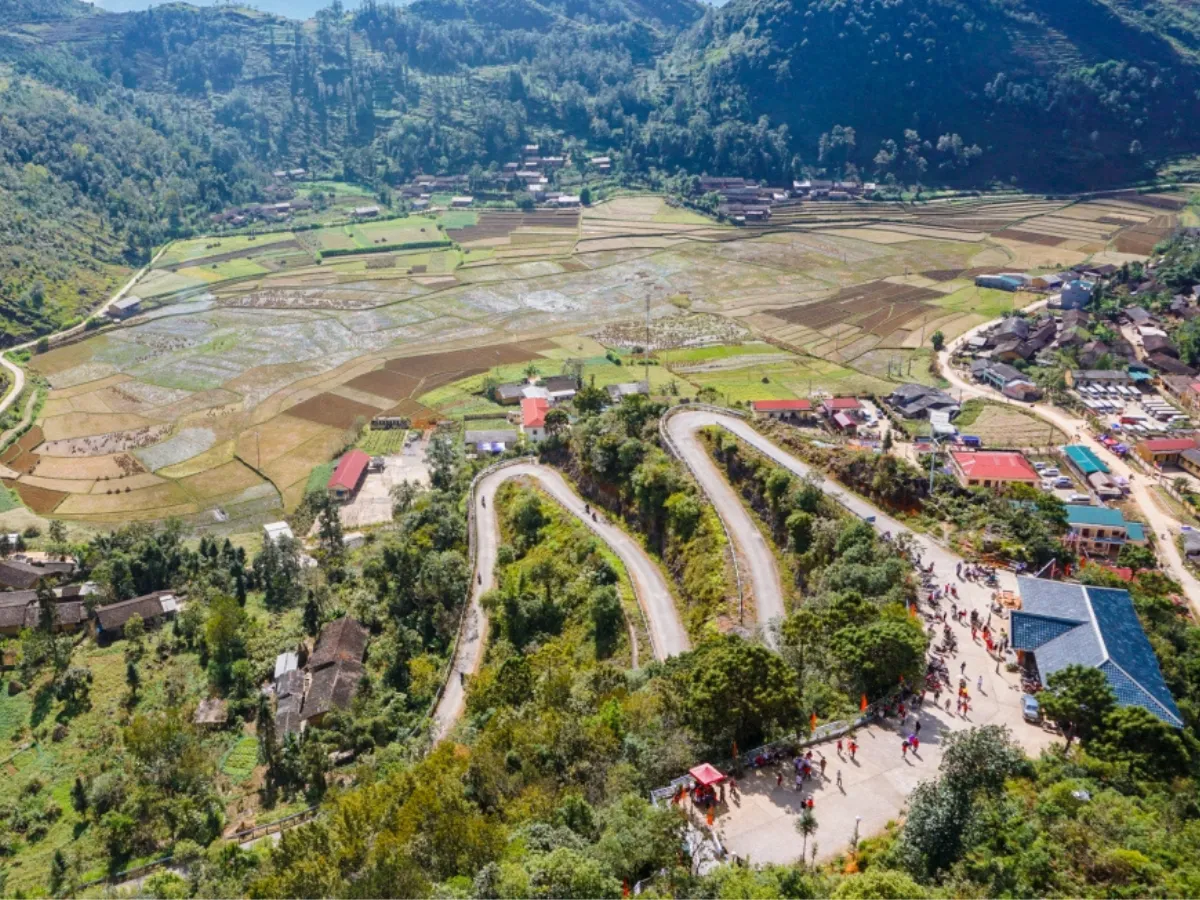
Going through the winding mountain passes at Lung Cu will be an unforgettable experience for you
If you are a backpacker lover, then you cannot miss the winding passes that go into Lung Cu. The road leading to Lung Cu crosses fields, and hills, surely this will be a road that challenges your steering.
Driving on the pass, visitors will enjoy a sense of freedom among the mountains and forests of the Northeast, and the majestic natural scenery. On both sides of the road, sometimes there are golden fields of ripe rice, and sometimes there are rows of flowers shimmering in the sun. Along the journey to the flagpole, you also have the opportunity to meet the women and children wearing colorful ethnic dresses.
5.3 Explore the Dong Van rocky plateau

Dong Van stone plateau stretches widely
Another place that you can’t miss is Dong Van Rock Plateau, only about 50 minutes south of Lung Cu flagpole. On October 3, 2010, Dong Van Rock Plateau was recognized as the first UNESCO Geopark in Vietnam and the second in Southeast Asia.
This is a common rocky plateau of four districts of Quan Ba, Yen Minh, Dong Van, and Meo Vac of Ha Giang province, Dong Van rocky plateau with its wild and poetic beauty will stun any visitor who comes. Located at an altitude of about 1000 – 1600m above sea level, Dong Van rock plateau with a one-color gray mountain range of cat’s ear rock creates a wild and rustic scenery next to the mountain and forest scenery is even more prominent and that is also the pride of all Vietnamese people.
5.4 Visit Dong Van town
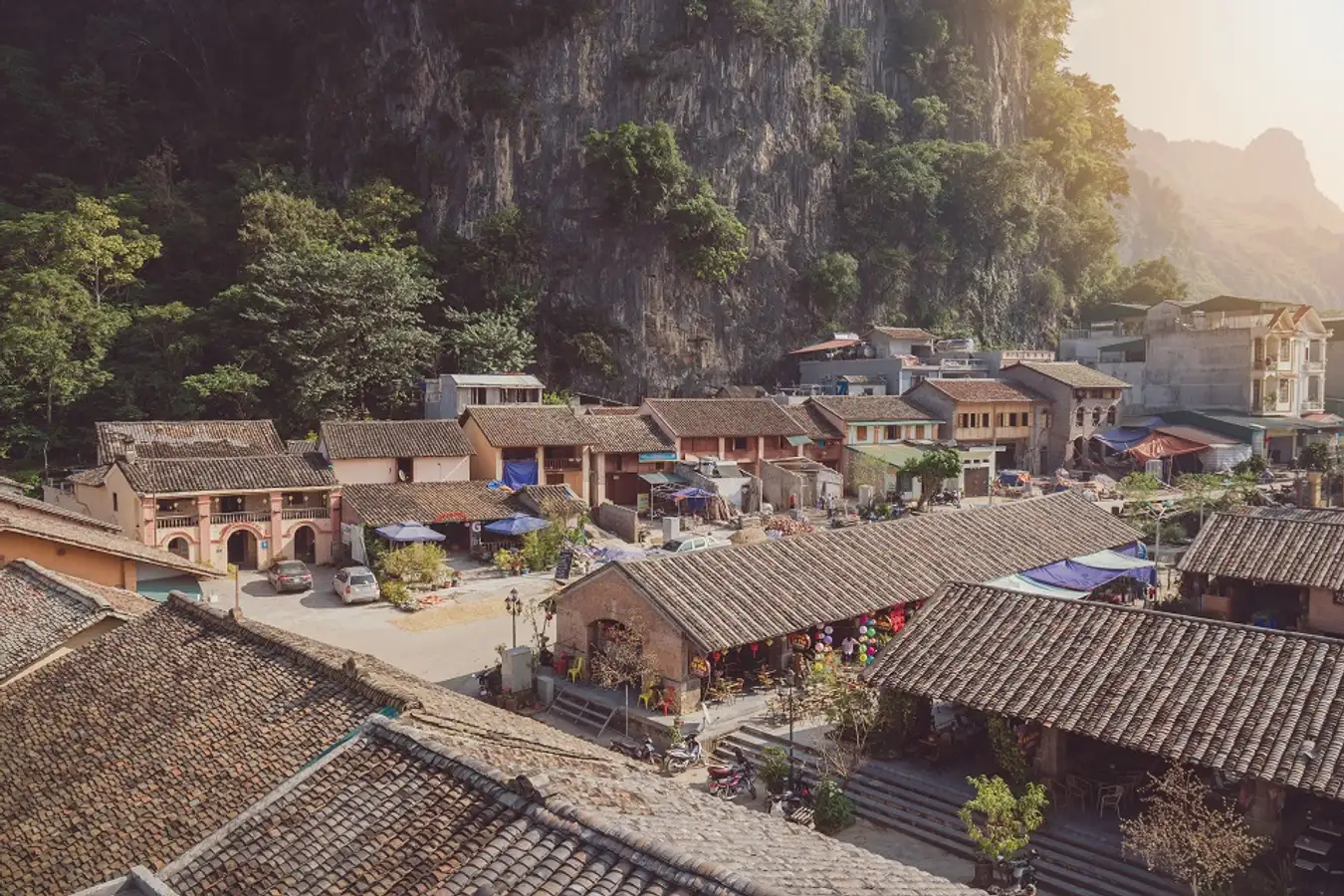
Dong Van ancient town is peaceful and rustic
Dong Van town is a point that you should not miss when visiting Lung Cu. This place is an ancient town, with many ancient and historical architecture. Coming here will definitely be an interesting experience, especially since you must taste the famous specialty of delicious corn wine here. The delicious taste of this dish will delight you and remember it forever.
Once you have climbed the Lung Cu flagpole and can see the entire view of Ha Giang, Karst Plateau promises that this place will bring you many different feelings in your soul. In addition, when traveling to Ha Giang, you should also visit Quan Ba Heavenly Gate, Hoang Su Phi, Nho Que River, Sung La Valley, Cat King Mansion, etc.

